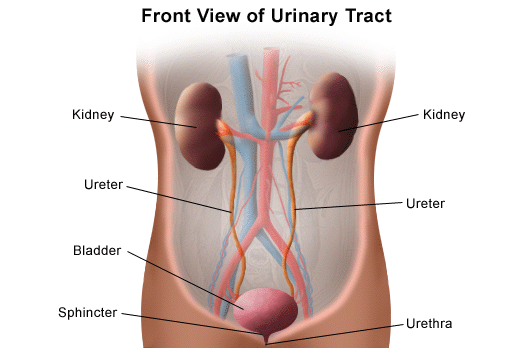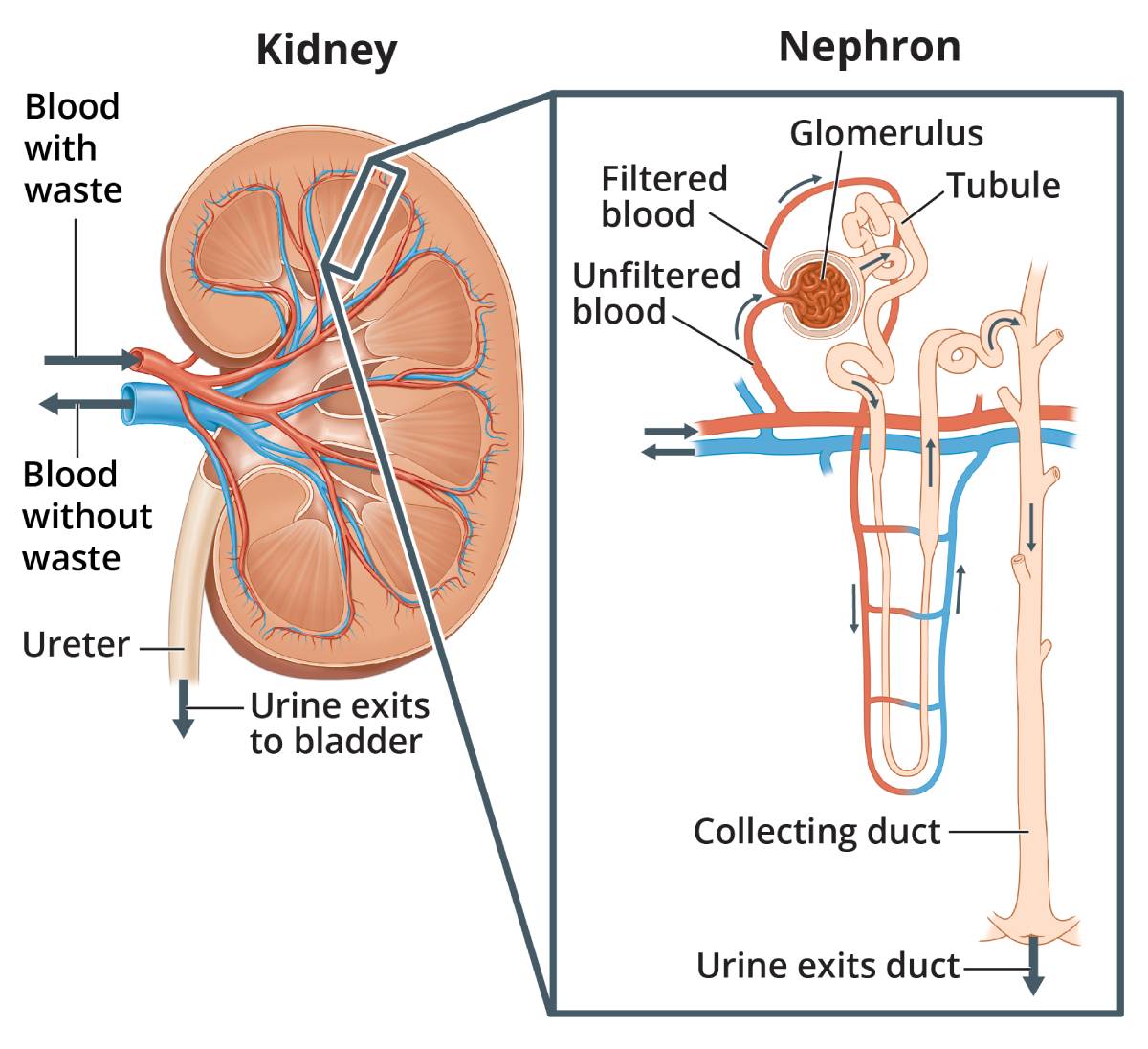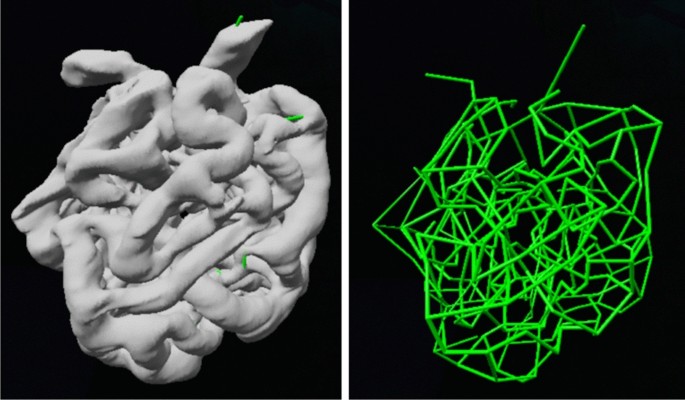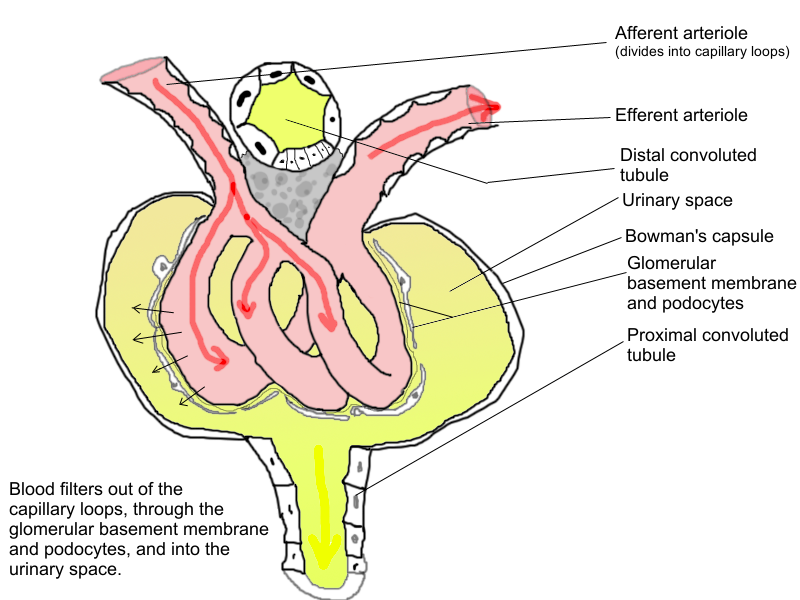What is a glomerulus?
A glomerulus is a tiny filter in the kidney. There are a million in each kidney. In other words, the kidney is not one big filter, it is a million tiny ones.


So. What is a glomerulus?
It is a ball shape structure. Inside it, there is a scrunched up ball of small blood vessels (called capillaries), a bit like mini-worms – see the diagram below. They are so small they can only be seen under a microscope.
The blood flows through the capillaries and is filtered through three layers of their sieve-like walls, making ultrafiltrate (that later becomes urine, see below). The glomerular basement membrane (GBM) is the middle wall of the capillary.

The ball of small blood vessels are enclosed within a cup-like sac called the Bowman’s capsule. The space inside the capsule that surrounds the glomerulus is known as the Bowman’s space.
.jpg)
Electron microscope image of the glomerular basement membrane.
What is the function of the glomerulus?
The main function of the glomerulus (and therefore the kidney) is to filter (and thereby clean) the blood. The thin walls of the capillaries (of the glomerulus) allow smaller molecules, wastes, and fluid – mostly water – to pass into the Bowman’s space (the area inside the capsule).

After that, the liquid passes out of the glomerulus, via to the proximal convoluted tubule (PCT). This is another thin tube, which acts as the drain for the glomerulus. Larger molecules, such as proteins and blood cells, stay in the blood capillaries.

Three dimensional glomerular reconstruction using microscope and computer.
Why is the glomerulus so important?
The filtering of blood by the glomerulus (glomerular filtration) is important, as it is the first step in making urine. It is the process by which your kidneys filter excess fluid and waste products out of the blood, and into what becomes urine – so they are eliminated from your body. In this way, the kidneys are the body’s dustmen.
How does blood get to and from the glomerulus?
The blood supply to a glomerulus comes from an ‘afferent arteriole’ (see diagram at start of article). It’s a branch of a larger kidney artery, originally from the aorta, the main blood vessel from the heart.
The blood then flows through the capillary network, where it gets filtered, and then leaves the glomerulus via an ‘efferent arteriole’. These eventually join up to form a larger renal vein that takes the filtered blood back to the heart.

What happens to the filtered liquid leaving the glomerulus?
The filtered liquid is called an ‘ultrafiltrate’ (early urine-like stuff) and is collected in the Bowman’s space, and drains directly into a tiny tube called a proximal convoluted tubule (PCT). These join others and eventually form the ureter that takes the urine to the bladder.
The composition of the ultrafiltrate is altered by the release of certain substances into it, and by pulling back of water and other constituents from it, and back into the bloodstream. What’s left after that is called urine.
History of word ‘glomerulus’
The glomerulus in the kidney was named by the Italian anatomist Marcello Malpighi (1628-1694). The structure was once called a Malphigian corpuscle.
‘Glomerulus’ is derived from the Latin ‘glomus’ meaning ‘ball of yarn’ and ‘-ulus’ meaning ‘small one’. It is literally therefore a ‘little ball of yarn’. The plural of glomerulus is ‘glomeruli’.
Glomerulonephritis
Edwin T. Klebs (1834−1913, Germany) coined the term ‘glomerulonephritis’ in an 1870 handbook of anatomical pathology. The term ‘nephritis’ was widely used at the time by other doctors to describe inflammation of the glomerulus. So, this is what each part of this rather long word means:
- ‘Glomerulo- = glomerulus
- ‘-neph-‘ = kidney
- ‘-itis’ = inflammation.
So the word ‘glomerulonephritis’ means ‘inflammation of the kidney’s glomerulus’.
Glomerular
This means relating to the glomerulus, as in ‘glomerular disease’. These include glomerulonephritis and diabetes (and others).
Summary
We have described what is a glomerulus. We hope it has been helpful.
Other resources
CKDEx has more information on how a glomerulus works, and some pictures of the glomerulus as art
Anatomy of glomerulus (3D) – Terasaki, 2020
Glomerular diseases: NIDDK, 2022
History of the word glomerulus: Bellomo, 2013
History of understanding glomerulonephritis: Shankar, 2022
How glomerulus works (and why it does not get clogged up): Benzing, NEJM, 2021 (this is more for health professionals)
Renal thrombotic microangiopathy (TMA)
https://www.youtube.com/watch?v=2eiLaFlTfKc
Last Reviewed on 3 April 2024

